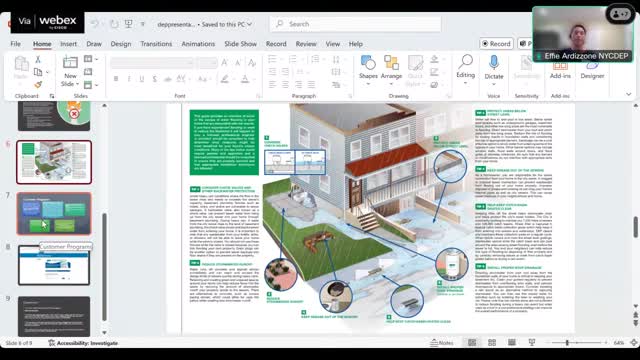Water management challenges escalate amid climate change concerns
November 01, 2024 | Bronx County/City, New York
This article was created by AI summarizing key points discussed. AI makes mistakes, so for full details and context, please refer to the video of the full meeting. Please report any errors so we can fix them. Report an error »

In a recent government meeting, officials addressed several pressing issues related to water management and billing in the context of increasing climate challenges. The discussion highlighted the importance of community engagement in reporting problems, urging residents to utilize the 311 service for complaints about water-related issues. This feedback mechanism is crucial for identifying and addressing problematic locations across the city.
Officials noted that the city’s sewer systems, originally designed to handle approximately 1.5 inches of rain, are now frequently overwhelmed by storms that can deliver up to 3 inches of rainfall. This situation has been exacerbated by climate change, leading to longer drainage times during heavy rain events. The analogy of a bathtub was used to illustrate the drainage process, emphasizing that while the system is functioning, it may take longer to manage the increased volume of water.
Additionally, the meeting provided clarity on water billing processes. The Department of Environmental Protection (DEP) explained that water bills include both water consumption and sewer charges, with the latter calculated based on a formula that typically doubles the water usage. Residents were reminded that most should have a gray Automated Meter Reading (AMR) box installed, which allows for accurate tracking of water usage.
To support residents facing financial difficulties, the DEP also outlined available assistance programs for disabled individuals and those receiving Home Energy Assistance Program (HEAP) benefits. This information is automatically relayed from the Human Resources Administration (HRA), simplifying the process for those in need of financial aid.
Overall, the meeting underscored the city's commitment to improving water management systems and ensuring transparency in billing, while also addressing the challenges posed by climate change.
Officials noted that the city’s sewer systems, originally designed to handle approximately 1.5 inches of rain, are now frequently overwhelmed by storms that can deliver up to 3 inches of rainfall. This situation has been exacerbated by climate change, leading to longer drainage times during heavy rain events. The analogy of a bathtub was used to illustrate the drainage process, emphasizing that while the system is functioning, it may take longer to manage the increased volume of water.
Additionally, the meeting provided clarity on water billing processes. The Department of Environmental Protection (DEP) explained that water bills include both water consumption and sewer charges, with the latter calculated based on a formula that typically doubles the water usage. Residents were reminded that most should have a gray Automated Meter Reading (AMR) box installed, which allows for accurate tracking of water usage.
To support residents facing financial difficulties, the DEP also outlined available assistance programs for disabled individuals and those receiving Home Energy Assistance Program (HEAP) benefits. This information is automatically relayed from the Human Resources Administration (HRA), simplifying the process for those in need of financial aid.
Overall, the meeting underscored the city's commitment to improving water management systems and ensuring transparency in billing, while also addressing the challenges posed by climate change.
View full meeting
This article is based on a recent meeting—watch the full video and explore the complete transcript for deeper insights into the discussion.
View full meeting
